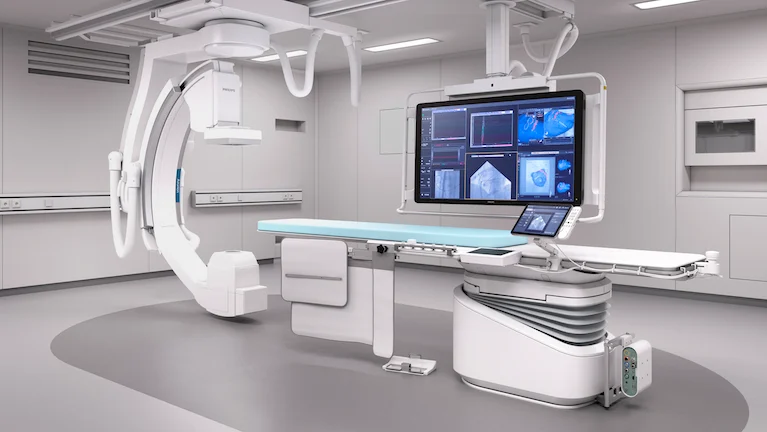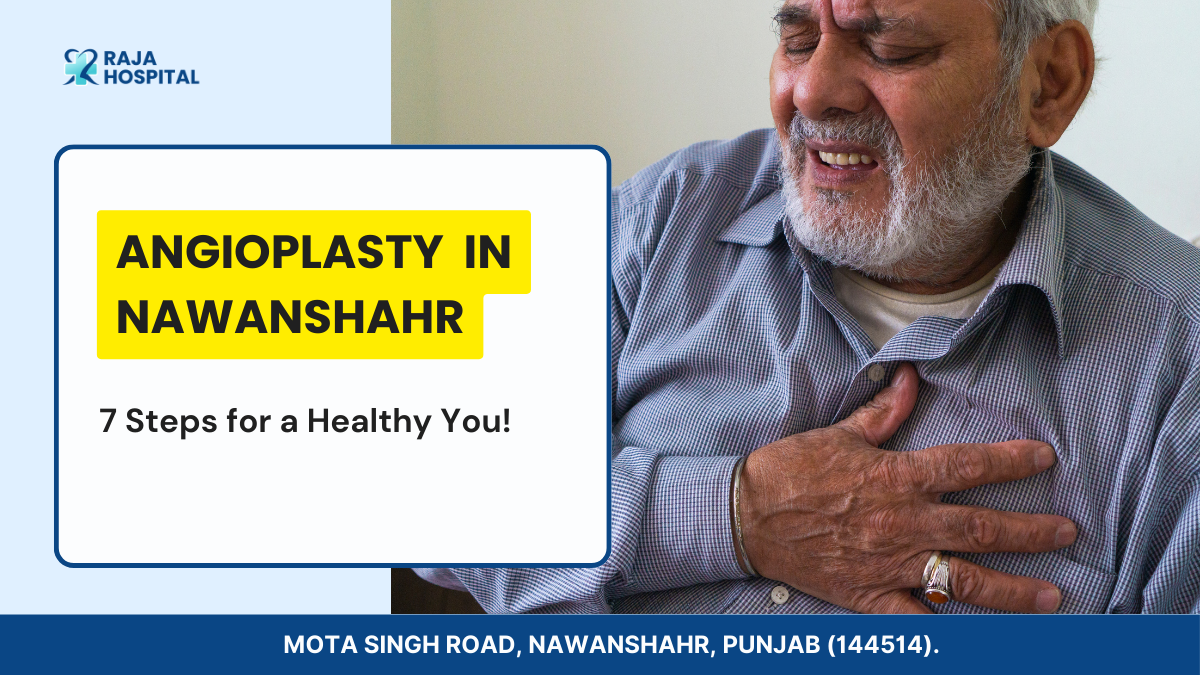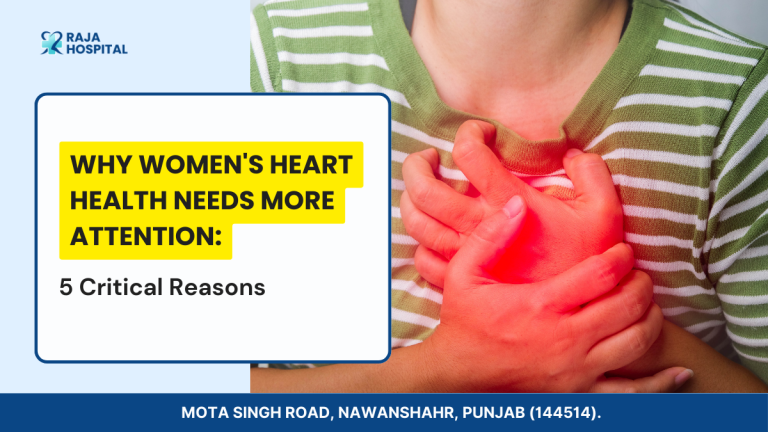Angioplasty in Nawanshahr: 7 Steps for a Healthy You!
REVIEWED BY DR. RAGHAV VISHESH LUMB (MD MEDICINE, DM CARDIOLOGY ) on 26th February 2024.
Angioplasty is a crucial medical intervention designed to address blocked arteries, a condition that, if left untreated, poses a significant risk of severe heart complications, including heart attacks. This procedure involves the skilled insertion of a catheter into the obstructed artery, where a stent or balloon is strategically placed to clear the blockage.
The after-effect of angioplasty results in restored blood flow through the arteries, allowing the heart to regain its optimal functionality. As we go deep into the topic of angioplasty costs, it is imperative to explore the financial aspects associated with this life-saving procedure, considering the various factors that contribute to its overall expenses and accessibility.
What is Angioplasty?

Angioplasty is a medical procedure used to treat narrowed or blocked blood vessels, typically arteries, and is commonly performed on coronary arteries in the heart. The goal of angioplasty is to restore or improve blood flow to the affected area.
Angioplasty is commonly used to treat conditions such as
- Coronary artery disease (heart)
- Peripheral artery disease (limbs)
- Carotid artery disease (neck)
- Renal artery stenosis (kidneys)
In some cases, a stent may be placed during angioplasty. A stent is a small mesh tube that acts as a scaffold to keep the artery open. It is often inserted at the site of the blockage to provide structural support and maintain the Vessel’s Patency.
It is important to note that angioplasty is not a cure for the underlying causes of arterial blockages, and lifestyle changes and medications may be recommended to address those issues and prevent further problems.
When is Angioplasty Recommended?
Angioplasty is a minimally intrusive procedure and is often used as an alternative to open-heart surgery. It can help relieve symptoms, improve blood flow, and reduce the risk of complications associated with narrowed or blocked arteries.
Angioplasty is recommended when:
- Heart Artery Blockage: To open narrowed heart arteries, especially if there’s chest pain or a heart attack.
- Emergency Heart Cases: During a heart attack, angioplasty is done urgently to restore blood flow.
- Persistent Chest Pain: If chest pain (angina) doesn’t improve with medication, angioplasty can help.
- Leg Artery Issues: For blocked leg arteries causing pain or walking difficulties.
- Carotid Artery Blockage: If the arteries to the brain are significantly narrowed, it can prevent strokes.
- Kidney Artery Problems: Angioplasty may be considered for narrowed kidney arteries affecting blood flow.
Decisions depend on the individual’s health and symptoms, and the procedure may include placing a stent to keep the artery open.
How is Angioplasty Performed?

During Angioplasty, a thin, flexible tube called a catheter is threaded through the blood vessels to the site of the blockage or narrowing. At the tip of the catheter, there is a small balloon that is inflated once it reaches the narrowed segment. The inflation of the balloon compresses the plaque or fatty deposits against the arterial walls, widening the vessel and improving blood flow.
Here are the key steps in a simplified way:
- Insert Catheter: A thin tube called a catheter is threaded through a blood vessel, usually from the groin or wrist, to reach the affected artery.
- Guidewire Placement: A guide wire is passed through the catheter and positioned at the blockage site.
- Balloon Inflation: A small balloon at the tip of the catheter is inflated at the blockage site, pushing the plaque or fatty deposits against the artery walls, and widening the vessel.
- Stent Placement (if needed): In some cases, a metal mesh tube called a stent may be inserted and expanded at the blockage site to help keep the artery open.
- Balloon Deflation and Catheter Removal: Once the artery is widened or the stent is in place, the balloon is deflated, and the catheter is removed.
- Closure of Incision: If the catheter is inserted through the groin, the puncture site is usually closed with a closure device or manual pressure to prevent bleeding.
- Monitoring: The patient is monitored for a short period to ensure there are no complications.
However, the specific details may vary based on the patient’s condition and the location of the blockage. Always consult with a healthcare professional for personalized information regarding medical procedures.
What is the process of a Modern Angioplasty Surgery?

Modern angioplasty techniques, including the use of drug-eluting stents, have significantly improved outcomes and reduced the need for repeat procedures. The process of modern angioplasty involves the following steps:
- Patient evaluation and diagnostic tests
- Local anesthesia at the insertion site
- Catheter insertion through the groin or wrist
- Guidewire placement under X-ray guidance
- Balloon inflation to widen the artery
- Stent placement for support (if needed)
- Post-dilation for optimization (if needed)
- Final assessment with angiography
- Closure of insertion site, monitoring for bleeding
- Patient recovery and discharge within a day
It is essential to note that the specific details of the procedure may vary based on the patient’s condition and the preferences of the treating physician.
Risk Involved in Angioplasty
While angioplasty is generally considered a safe and effective treatment, like any medical procedure, it does involve certain risks. Here are some of the potential risks associated with angioplasty:

- Bleeding at the catheter insertion site
- Infection risk
- Allergic reactions to contrast dye
- Blood vessel damage
- Blood clot formation
- Restenosis (artery narrowing again)
- Coronary artery dissection
- Heart attack risk
- Kidney damage from contrast dye
- Radiation exposure from X-rays
The decision to undergo angioplasty is made after careful consideration of the individual’s medical history, symptoms, and overall health. Patients should discuss any concerns or questions with their healthcare provider to make informed decisions about their treatment.
Advantages of Angioplasty
The benefits of angioplasty include its ability to relieve symptoms, restore proper blood circulation, and minimize recovery time compared to traditional open-heart surgeries.
Here are some advantages of angioplasty:
- Minimally invasive alternative to open-heart surgery.
- Faster recovery time and reduced complications.
- Restores proper blood flow, lowering heart-related risks.
- Shorter hospital stays, contributing to cost-effectiveness.
- Lower complication rates compared to some surgeries.
- Some procedures can be done on an outpatient basis.
- The customization approach is based on patient needs.
- Minimal trauma to surrounding tissues, less postoperative pain.
- Applicable to various vascular conditions.
- Continuous advancements enhance efficacy and safety.
It’s important to note that while angioplasty has these advantages, it may not be suitable for everyone. Always be concerned with your doctor so you can get better treatment.
Why Angioplasty Costs Vary?

Several variables may affect the price of an angioplasty. The following are significant variables that may impact the cost of angioplasty:
- Location influences costs (City, healthcare facility).
- Hospital reputation and quality impact pricing.
- Insurance coverage determines out-of-pocket expenses.
- Different angioplasty types have varying costs.
- Additional services and facilities may contribute to higher prices.
- Physician fees vary based on experience and location.
- Costs include medical supplies, equipment, and disposable items.
Patients need to discuss the cost of angioplasty with their healthcare providers and explore options for managing the expenses associated with the procedure.
Conclusion
In summary, knowing why angioplasty costs differ, its benefits, and risks, and when it’s advised can help you make better decisions about your heart health. Understanding these aspects can guide you through the process of angioplasty, from considering expenses to weighing the pros and cons.
Being well-informed empowers you to navigate your cardiovascular journey with confidence and clarity. For those in need of reliable information and expert guidance on angioplasty, we recommend reaching out to experienced medical professionals.
Don’t hesitate to contact Raja Hospital for a consultation and take a proactive step towards maintaining a healthy heart.




